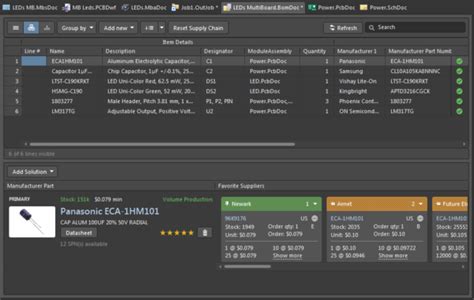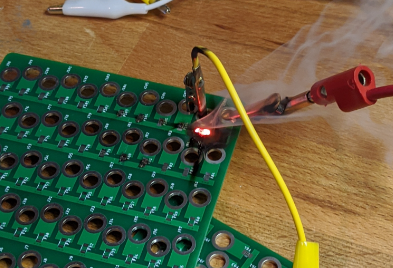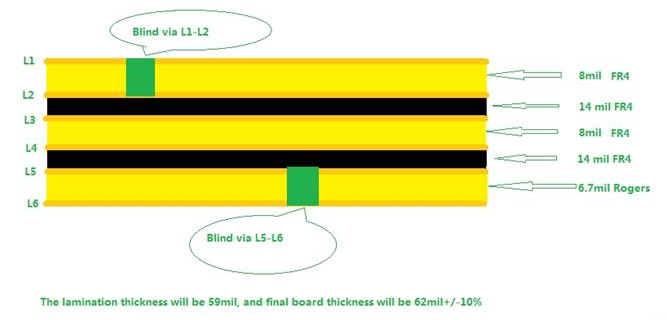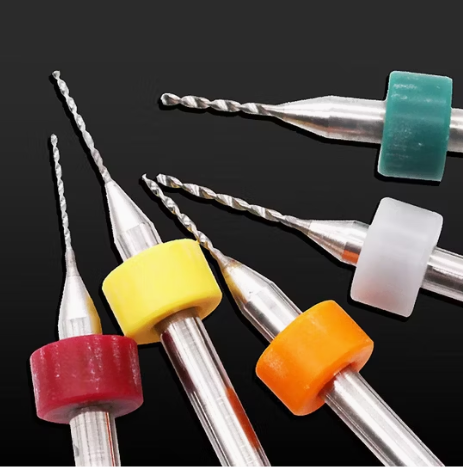Mastering Altium: Unlocking Multi Board Assembly Success
Key Takeaways
In the realm of electronic development, multi board assembly represents a crucial aspect of PCB assembly that professionals must master to ensure seamless integration across various components. By focusing on optimizing your PCBA processes, you can drive efficiency and better manage complex designs. Understanding the interconnected nature of multiple boards allows designers to better foresee compatibility issues and streamline their workflows. Furthermore, leveraging the essential tools and features offered by Altium can significantly enhance your collective design experience, thus improving overall project outcomes. Emphasizing collaboration among team members will lead to more innovative solutions as you tackle challenges unique to multi board assembly. In summary, embracing these key takeaways will empower you to achieve greater success in your electronic design projects, enhancing not only the functionality of your products but also ensuring that each project’s final output meets industry standards.
Introduction to Multi Board Assembly in Altium
In the realm of electronic development, mastering multi board assembly (MBA) in Altium is crucial for producing effective and efficient designs. As projects become more complex, the integration of multiple printed circuit boards (PCBs) is not just advantageous but often necessary. The process of pcb assembly can be intricate, and an understanding of multi board assembly can greatly enhance the outcome of your projects.
Utilizing Altium’s extensive features allows designers to oversee several PCBs collaboratively, ensuring that they fit together seamlessly. Key functionalities, such as schematic capture and layout design, facilitate a more cohesive workflow when working with multiple boards. By leveraging these tools, engineers can minimize errors and design discrepancies that typically arise during the pcba process.
“Understanding your tools is half the battle won in multi board assembly,” says a seasoned PCB designer. This highlights the importance of being proficient with software capabilities to optimize design efficiency.
Furthermore, defining clear guidelines and employing best practices early in the project will streamline communication among team members involved in the pcb assembly process. Integration points between multi board designs must be meticulously planned to avoid complications later on. Adhering to structured methodologies not only accelerates development time but also enhances overall project collaboration.
Below is a brief table summarizing essential considerations when engaging in multi board assembly:
| Consideration | Description |
|---|---|
| Clear Documentation | Ensure all components are clearly labeled and documented. |
| Version Control | Keep track of design changes across all boards for cohesion. |
| Design Validation | Regularly validate designs to catch potential errors early on. |
In conclusion, understanding multi board assembly in Altium is imperative for success in electronic projects. By applying expert techniques and leveraging advanced tools, designers can navigate the complexities inherent in PCBA with greater ease and confidence.
Essential Tools and Features for Effective Design
To achieve success in multi board assembly, leveraging the right tools and features within Altium is crucial. Altium Designer provides an array of capabilities specifically designed for PCB assembly and streamlining the design process. One of the standout features is the Unified Environment, which integrates schematic capture, PCB layout, and manufacturing outputs, facilitating a seamless workflow between different stages of development. Additionally, the Component Management tools enable designers to efficiently manage components across multiple boards, ensuring that all parts are appropriately accounted for in the PCBA process.
Incorporating multi board assembly templates allows for consistent design practices and reduces errors that may arise from handling diverse board layouts. The Collaboration Tools within Altium promote teamwork by enabling effective communication and file sharing among project stakeholders. Furthermore, utilizing the Design Rule Check (DRC) ensures that adherence to standards is maintained across all boards, significantly easing the path to successful project outcomes.
Incorporating these essential features not only enhances individual productivity but also amplifies collaboration efforts in any electronic development endeavor. Understanding how to leverage these tools effectively can lead designers to produce optimized designs that meet both performance requirements and project timelines.
Best Practices for Streamlining the Design Process
Efficient PCB assembly is critical to the success of any multi board assembly project. To achieve a streamlined design process in Altium, it is essential to adopt several best practices. First and foremost, utilizing design templates can significantly reduce repetitive tasks and ensure consistency across multiple boards. Creating a centralized library of components, including symbols and footprints, allows for easier management and reduces the chances of errors during pcba.
Another important practice is maintaining clear and consistent naming conventions for your components. This not only simplifies communication among team members but also enhances traceability throughout the design process. Regularly conducting design reviews early in the project can also identify potential issues before they escalate, thus saving time during the assembly phase.
Incorporating automated checking tools offered by Altium can help validate your design against common standards, ensuring that every component adheres to required specifications. Furthermore, leveraging features such as version control allows multiple engineers to collaborate efficiently on shared projects without confusion over changes or updates.
Lastly, it’s vital to maintain open lines of communication among all team members involved in the PCB assembly process. Frequent updates and discussions about progress or potential challenges foster collaboration and ensure that everyone remains aligned with the project’s objectives. By following these best practices, teams can enhance their workflow and ultimately drive successful outcomes in electronic development projects involving pcba.
Collaborating Effectively with Multi Board Projects
In today’s dynamic electronic development landscape, effective collaboration is crucial for the success of multi board assembly projects. With the complexity of modern pcb assembly processes, teams must utilize advanced features within Altium to synchronize their efforts seamlessly. The design teams can leverage tools such as design rules checking and real-time collaboration capabilities to ensure that everyone is on the same page. Utilizing a centralized project environment allows multiple contributors to access and modify designs simultaneously, leading to increased efficiency and a more cohesive workflow.
Additionally, embracing a robust communication strategy is vital. By holding regular meetings and using dedicated channels for project updates, teams can address any roadblocks early on. Implementing best practices for version control is equally important; managing revisions effectively helps prevent conflicts and ensures that all collaborators are working with the most current design files. Furthermore, integrating feedback loops within the project timeline allows for continuous improvement and refinement of designs, ultimately enhancing the quality of the pcba output.
Nurturing a collaborative mindset fosters an environment where innovation can thrive. When team members feel encouraged to share ideas and suggestions openly, it paves the way for creative solutions that improve project outcomes. Emphasizing collective ownership over both challenges and successes in multi board projects not only drives technical excellence but also strengthens team cohesion in achieving shared goals.
Common Challenges in Multi Board Assembly and Solutions
In the realm of multi board assembly, several challenges can hinder the efficiency and success of a project. One prominent issue is the complexity of managing multiple PCBs (Printed Circuit Boards) simultaneously, which can lead to difficulties in ensuring that all components are accurately placed and soldered. This complexity often results in errors during the PCB assembly process, ultimately impacting the performance and reliability of the final product. To address this challenge, teams can implement advanced design tools that facilitate better coordination between boards.
Another common pitfall is miscommunication among team members involved in different stages of the project, which can contribute to discrepancies in design intent and execution. Utilizing collaborative platforms integrated with Altium can streamline communication, ensuring that all stakeholders have access to real-time updates and changes made throughout the development process.
Additionally, supply chain issues can arise when sourcing components for multiple boards, leading to delays or shortages that affect timelines. A strategic approach to inventory management—such as maintaining an updated database of components used across various projects—can alleviate these concerns significantly.
Moreover, as projects scale, ensuring consistency in design across multiple boards becomes increasingly difficult. Implementing robust design rules within Altium ensures that all PCBs adhere to established guidelines, minimizing the risk of inconsistencies. By embracing these techniques and solutions within your workflow, you can significantly enhance your chances of overcoming common challenges associated with multi board assembly, leading to successful outcomes in your electronic development endeavors.
Advanced Techniques for Optimizing Your Designs
In the realm of multi board assembly, optimizing your designs can lead to significant improvements in both efficiency and functionality. One effective technique is to leverage the capabilities of Altium to perform thorough design rule checks (DRC) early in the process. This helps in identifying potential issues before they escalate into costly errors during pcb assembly. Another advanced strategy involves utilizing layer stack management effectively, which can aid in optimizing signal integrity and minimizing interference between boards. Employing pre-layout simulations allows designers to anticipate performance outcomes and make data-driven adjustments before finalizing their designs, further enhancing the chances of successful pcba results.
Additionally, maintaining a comprehensive library of components is crucial. Using version-control systems for managing your library components ensures that all team members are on the same page, thereby facilitating collaboration and reducing discrepancies that can arise from using outdated parts. To truly master multi board projects, consider integrating specialized design tools that allow for real-time collaboration across teams. This kind of synergy not only improves workflow efficiency but also ensures that each team contributes effectively to achieving the overall project objectives.
Employing these advanced techniques not only streamlines the design process but also helps mitigate common challenges faced during multi board assembly, ultimately leading you towards excellence in electronic development. By refining your practices within Altium, you are better positioned to meet your project goals while maximizing both time and resource allocation.
Case Studies: Successful Multi Board Assembly Projects
In the realm of pcb assembly, successful project outcomes often serve as a testament to effective strategies and techniques. One notable case involved a leading manufacturer of consumer electronics, where the integration of multi board assembly in their workflow drastically improved efficiency. By utilizing Altium’s powerful features, the design team was able to seamlessly collaborate on distinct board designs while ensuring each board’s contribution to the final product was meticulously accounted for. This resulted in a significant reduction in errors during the pcba processes, allowing for quicker iterations and refinements.
Another impressive example can be found in an automotive application where multiple boards needed to work in synchronization within a complex system. The engineers implemented advanced techniques available within Altium, such as design reuse and integrated simulation capabilities, which not only shortened development cycles but also enhanced the reliability of circuit performances across different boards. By addressing early-stage design challenges through careful planning and use of best practices, this team achieved their goals ahead of schedule, demonstrating that strategic use of available tools can yield significant advantages.
These case studies highlight how leveraging Altium for multi board projects can lead to exemplary results. Each scenario showcases the ability to tackle common challenges, streamline design processes, and ultimately produce high-quality electronic products while fostering effective collaboration among team members. These insights serve as valuable guidelines for engineers seeking to maximize their success in future pcb assembly endeavors.
Conclusion: Achieving Excellence in Electronic Development
In the realm of pcb assembly, achieving excellence is not solely about mastering tools but also about understanding the intricate dynamics of multi board assembly. As electronic projects grow in complexity, the need for a robust approach to pcba becomes increasingly critical. This guide has navigated through essential techniques and best practices that empower engineers and designers to optimize their workflows. Emphasizing collaboration across teams enhances the design process, ensuring that each component fits seamlessly into the larger vision. Remember, facing challenges head-on is part of this journey; identifying potential obstacles in multi board assembly can lead to innovative solutions that enhance your final output. By implementing advanced techniques, your projects can not only meet but exceed expectations, propelling your electronic development endeavors into a realm of success and efficiency. The pursuit of excellence demands continuous learning and adaptation; therefore, keep exploring new practices within pcb assembly to remain at the forefront of electrical design advancements.
Conclusion: Achieving Excellence in Electronic Development
In today’s fast-paced electronics industry, mastering multi board assembly is crucial for successfully bringing designs to life. By understanding the complexities involved in pcb assembly and leveraging advanced tools, engineers can significantly enhance the effectiveness of their workflows. The comprehensive insights provided throughout this guide emphasize the importance of adopting best practices and utilizing essential features within Altium to streamline multi board projects. One key takeaway is the necessity of fostering effective collaboration among team members, which plays a vital role in reducing mistakes and improving project timelines. Additionally, being aware of common challenges faced in pcba will enable teams to implement solutions proactively, ensuring smoother processes. As you navigate the intricacies of multi board assembly, remember that continual learning and adaptation are essential in achieving excellence in electronic development. Embracing these strategies will pave the way toward not only successful project outcomes but also innovation within the broader field of electronics design.
FAQs
What is multi board assembly in Altium?
Multi board assembly in Altium refers to the process of designing and assembling multiple interconnected PCBs (printed circuit boards) in a single project. This approach allows for complex electronic systems to be developed efficiently by managing the interconnectivity and layout simultaneously.
How can I streamline my PCB assembly process?
To streamline your PCB assembly process, utilize Altium’s powerful features, such as its intuitive design tools and automated routing capabilities. Implementing best practices like modular design and effective version control can also enhance your workflow and reduce errors.
What are common challenges faced during multi board assembly?
Common challenges include managing signal integrity across boards, ensuring proper pcba (printed circuit board assembly) connections, and coordinating team collaboration. Understanding these challenges upfront can help you devise strategies to overcome them.
How do I achieve effective collaboration on multi board projects?
Effective collaboration on multi board projects requires clear communication among team members. Tools within Altium can facilitate seamless sharing of designs and updates. Regular meetings to discuss progress and challenges also help maintain alignment.
What advanced techniques can I employ for optimizing my designs?
Consider applying techniques such as differential pair routing, impedance matching, and thermal management strategies within your designs. These advanced methodologies will enhance the performance of your electronic systems during the pcb assembly phase.







